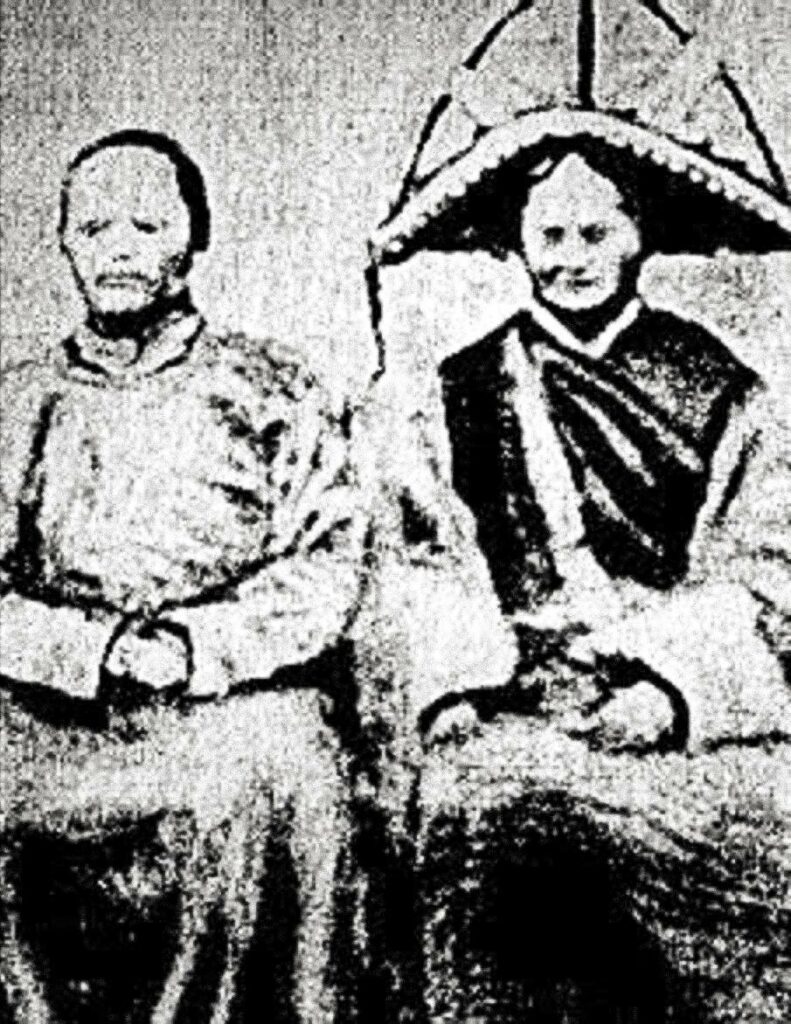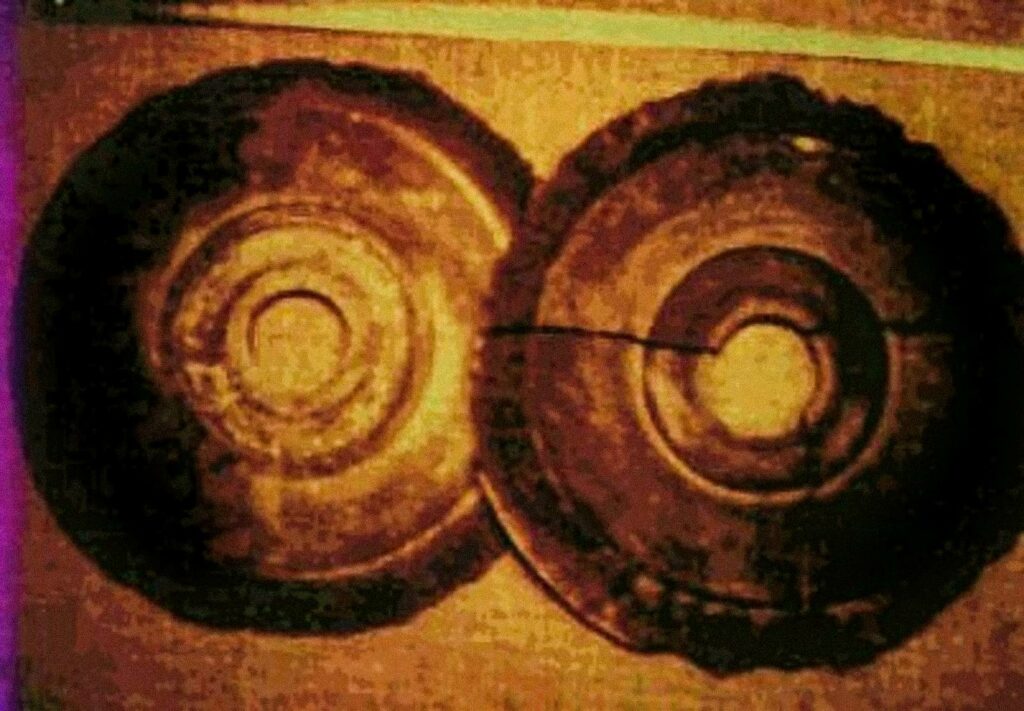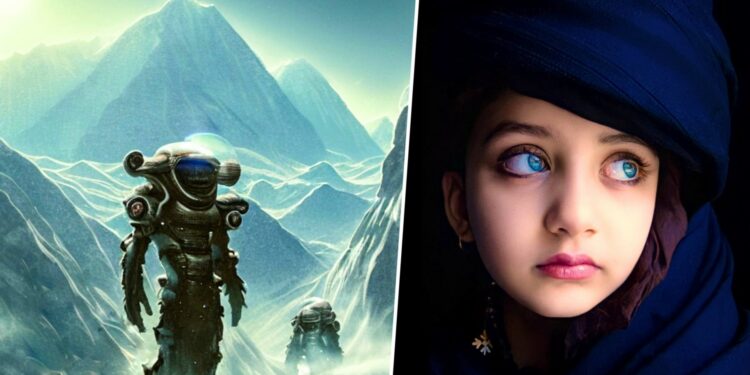This unusual tribe was believed to have been extraterrestrial because they had strange blue eyes, almond-shaped with double lids; they spoke an unknown language, and their DNA did not match any other known tribe.
In the early 20th century, a strange story emerged from the isolated peaks of the Himalayas. The story was that in 1938, a group of amateur archaeologists discovered remains of an ancient culture with insights into astronomy and timekeeping that were far beyond any other known human culture at that time. But what was even stranger was their discovery of an entire hidden chamber in one of the caves, which contained a cylinder made of a metal unknown to them, as well as 7 dead bodies with unusual physical features.

What’s more is that they discovered sculptures carved into the walls which resembled these strange people: short lanky figures with large heads and comparatively small bodies. These explorers believed these people were called “Dropa” because one of these sculptures had been vandalized with graffiti so they could read it.
The Explorers theorized that this tribe must have fallen through a gap in the floor above and died due to lack of oxygen since there was no other way out. They concluded that they must have been some sort of refugees fleeing from another tribe or group of people who destroyed their homes or land for some reason (perhaps war?). As such, they buried them respectfully before leaving and never spoke about it again.
The mysterious Dropa people
The Bayan-Kara-Ula mountain range on the China-Tibet border is home to the Ham and Dropa peoples, who are distinct from the surrounding tribes due to their unique human genotype. The Dropas and Ham peoples are of diminutive stature, with an average height of 4’2″ and an average weight of 60 pounds. Their small stature is offset by their large eyes with blue pupils, as well as their large heads.

Since no humans could live at such high altitude and survive without special equipment, researchers determined that these people must be another type of humanoid alien life form. According to an old Chinese folktale, strange-looking beings from the sky fell from the heavens but were redistributed because of their strange physical characteristics.
In the past century, Western explorers have discovered that the Dropa people, who live in a brutal climate of ice and high altitudes in the Himalayas near Tibet, have inhabited these regions for thousands of years. According to the Associated Press (AP) (Nov. 1995), some 120 “dwarflike individuals” were found in Sichuan Province in a village known as “Village of the Dwarfs.”
The picture of the Dropa ruling couple, Hueypah-La (4 ft. tall) and Veez-La (3 ft. 4 in. tall), is shown in the photo above, which were taken by Dr. Karyl Robin-Evans during his 1947 expedition. Does this indicate an evolutionary adjustment to high elevation climates? Or, are these rediscoveries evidence of another theory related to the Dropa Stone Discs?
The Dropa Stone Discs
The story says that in 1962, Professor Tsum Um Nui and his team of five archaeologists from the Peking Academy of Prehistory deciphered the Dropa Disc inscriptions. Despite the strange claims made in the translation, the scientists published their research. As a result, Professor Um Nui was forced to leave China, where he died shortly afterwards. Following the Cultural Revolution, much was lost forever, although little is known about what happened next.

Today many enthusiasts say, there is no evidence at the camp that disproves the 1962 tale or its translation. It would be foolish to think that the tale was invented or that the translation was a hoax. The story may be improbable, but it is not impossible, nor has anyone ever deciphered a human language, let alone an extraterrestrial one.
The discs were discovered in between 1937 and 1938, and at that time their inscriptions could not be deciphered by modern researchers. It’s possible that in 1962, when a team of specialists tried to decipher them, the language in which they were written had not yet been properly understood. Though, we also don’t know if the language had not been already deciphered in 1937 or afterwards.
Scientists in China were able to create some meaning with the help of technological dating and modern instruments in 1962. Weathering and erosion may have been responsible for inability to decipher any language; and Dropa Stone is no exception.
What is the meaning of the inscriptions?
The individuals of a region named the Ham, who observed a spaceship crash-land, supposedly translated a tabloid story. After investigating where the accident occurred, the people discovered that otherworldly beings had come down from the sky. The indigenous population started to kill them, as invaders commonly do. Although they were friendly towards the natives, they were killed as a result of their mistakes.
“The Dropa came down from the clouds in their aircraft. Our men, women, and children hid in the caves ten times before sunrise. When at last they understood the sign language of the Dropa, they realized that the newcomers had peaceful intentions.”
The extraterrestrials were unable to mend their broken spacecraft and so remained with the Ham people. According to a lot of translators, interbreeding between species is suggested by this text. If interbreeding occurred, what are the physical markers that distinguish the modern Dropa from their Tibetan and Chinese fellows? Well, there are so many of that.
The Dropa people are distinct from their neighbouring peoples due to their genetic anomalies. So, could the inscriptions of the Dropa Stone Discs be right after all? Is it possible that the Dropa people are actually of extraterrestrial origin?























